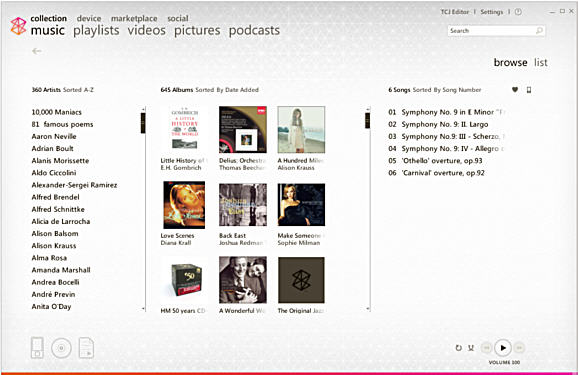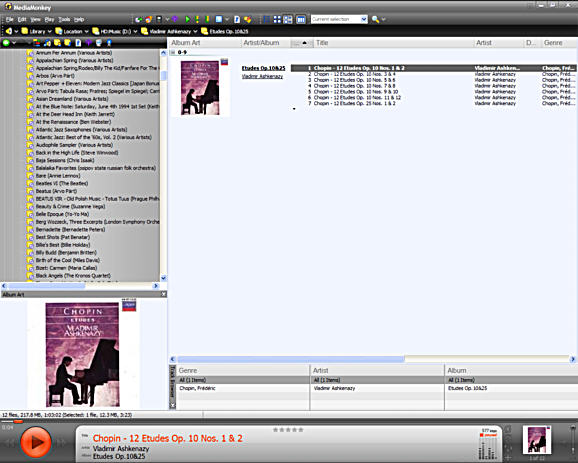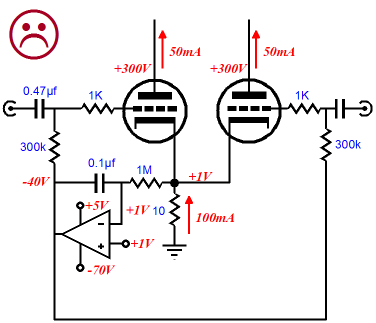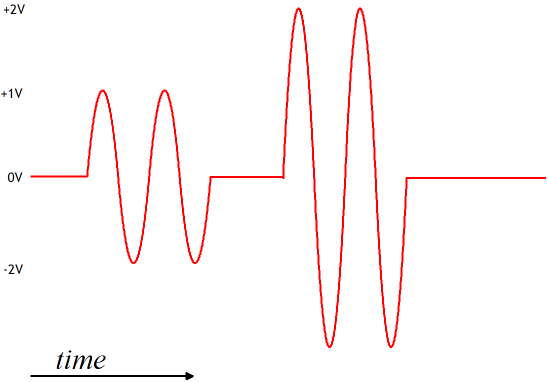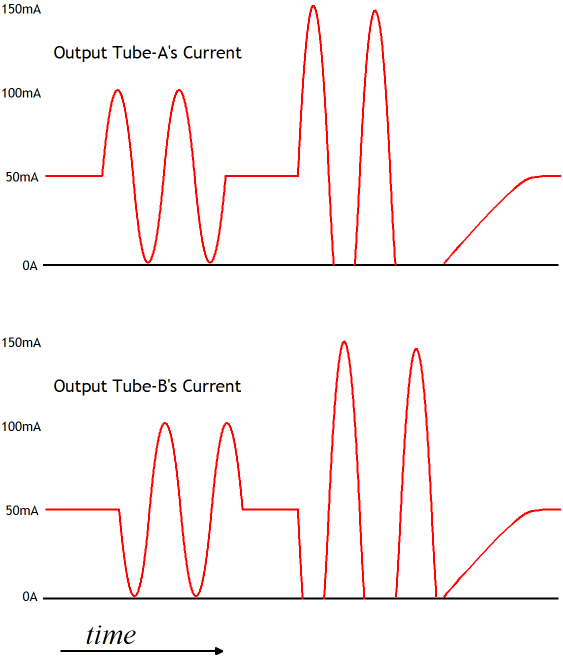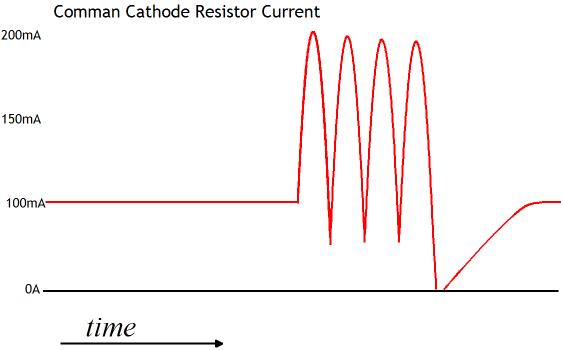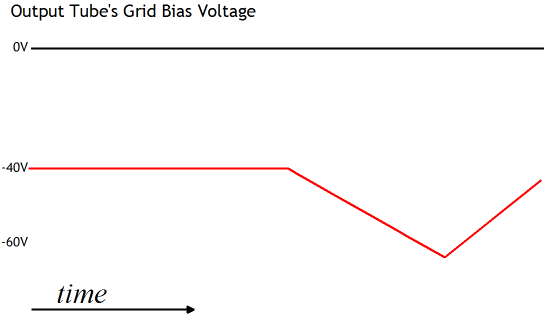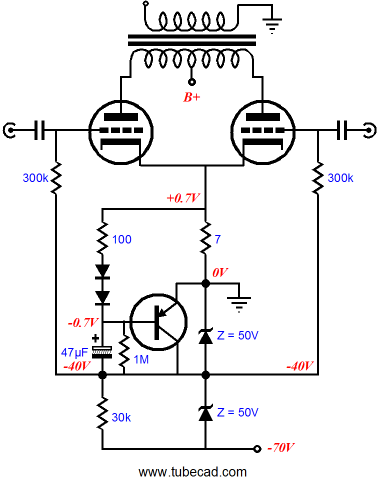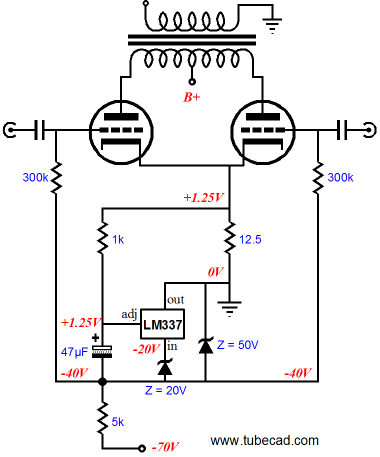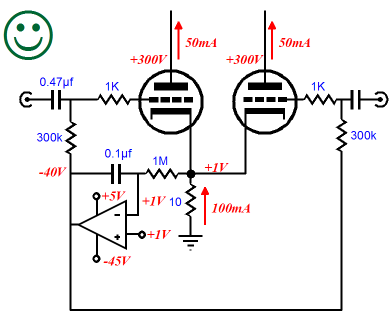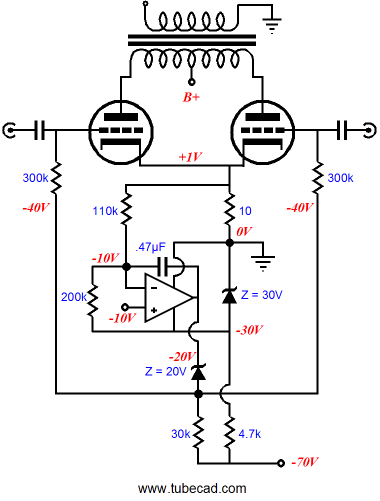| John Broskie's Guide to Tube Circuit Analysis & Design |
15 January 2008
My Christmas present was deferred. Like many others, I had to wait before I could get my new 80G Zune, as no one had them in stock. In fact, after many phone calls and when at last I had at last found one in stock, I had to promise to pick it up within 30 minutes, my Zune being the last one in the store. Wait a minute: don’t you already own two Zunes? How many do you need? Well, my last experiment in making a classical-music-only Zune produced mixed results. One of which was that I ended up giving the second (and newer) Zune to my wife. Beyond the problem of forcing classical music into the pop-music template that all MP3 players are designed to conform to, there is the additional problem of not being able to fit much classical music in 30G of hard drive memory. First of all, there is a ton of classical music that has been composed over the last five centuaries and much of it has been recorded. And many compositions have been performed and recorded hundreds of times, for example any symphony by Beethoven. (Yes, indeed; I would love to have 30G filled with just the nine Beethoven symphonies, different conductors, different orchestras, with some conductors, such as Herbert Von Karajan, getting several tries at the baton with the same work.) Second, although classical music often compresses more snugly than pop music (due its wide dynamic range, filled as it is with pauses and quiet passages), the music suffers greatly from excessive compression. This was the conclusion I reached after reviewing classical music at different compresion levels and file sizes and my conclusion was reinforced after my reading up on classical music and iPods. So I had to give up either on sound quality or album quantity…or give up altogether on the classical music project, which is what I choose to do to the benefit of my wife. Well, now that I have 80G to play with, I am willing to give it another go. Once again, I will transpose database fields, so that the composer’s name takes the place of genre. (After all, the only genre will be classical.) Once again, conductors and featured artists will be placed the singer/group slot. And once again, play-lists will allow me to sort and organize the many tracks that make up a typical classical composition. At least once a year??? Notice that Jobs didn't say a better-sounding iPod. Had Microsoft also reached the same conclusion—namely, that sound quality wasn’t part of what made a great MP3 player, that sound quality can be traded away for extended battery life or lower production costs? Am I being too cynical? If you read as many glossy-magazine and professional-webiste reviews of MP3 players as I have, you quickly realize that sonic performance is seldom mentioned or considered in the evaluation. The Stereo-Review mindset triumphs once again that, as the key specifications are capacity and playback time, not sound quality. Many readers are too young to remember Stereo Review magazine; they are indeed fortunate. The rest of us painfully recall that doomed monument to banalities and lost purpose. (Well, at least the Rodriquez cartoons were first-rate.) No doubt the marketing folks at Apple have read all the iPod reviews and they have given the public what it seemingly wanted, which wasn’t a better sonic presentation. For example, the Wolfson chip sets are gone, replaced by those from Cirrus Logic. Alas.
I was nervous. A few reports spurted up on the Web proclaiming even better sound for the new Zunes. I grew less nervous. I bought the new Zune; I plugged in its new fancier headphones; I listened briefly; I was disappointed. But the only music on the Zune at the time was the preloaded pop stuff, so five minutes later I listened again, but with my own ripped files. I was now uncertain, as the sound quality was much improved, but was it better than the old player's. I then plugged in my Sennheiser HD-650s and did a serious shootout. At last, I was happy. A lot more testing is required, but I doubt that the smile will leave my ears anytime soon.
Lest you imagine that I am a stanch Microsoft worshiper, I will make a few observations on the new software interface for the Zune program that resides on the home computer. I was tempted to look in the thesaurus for a politer synonym for “execrable,” but I do not want to overreact. Let me just say that the software has taken a giant step backwards. Being neither as attractive nor as functional as its prior incarnation, “What were they thinking?” kept running through my mind as I was dazzled by the weak, simpleminded, and disgraceful retreat Microsoft once again has embraced in its software. The company has a long history of losing faith in its customers and withdrawing into a dumb-downed product. Remember the more complex MS File Manager of Win 3.1? Remember MS Bob?
Need I say more? Oh well, my bet that Microsoft will re-release its new Big-Brother program as "Little Kid Brother" in a few years.
Until Microsoft regains its software nerve, the best program I have found for managing audio files is MediaMonkey. An amazing bargain at $19.95.
This seems a simple enough of a task. Besides, if they were able to accomplish this job in the Brooks amplifier (with tubes no less), it should be a breeze today, using PIC processors, cheap analog-to-digital converters, some simple programming, maybe a look-up table or two... Or we might try something much simpler, an OpAmp-based DC servo. But before we get to this circuit, let’s take a look at an OpAmp-based DC servo application that runs into trouble.
The above circuit has been tried many times—without success, at least not with class-AB output stages. The idea behind the circuit is that the desired idle current can be automatically set by the OpAmp, as the OpAmp will use all its enormous gain to maintain the same voltage at both its negative and positive inputs. And as its positive sees a fixed DC voltage, the OpAmp’s output will move up and down in voltage to ensure that the OpAmp’s negative input sees the same voltage. If the tubes draw too much current, the voltage drop across the shared cathode resistor will grow higher than 1V (in this example), and the OpAmp’s negative input will see a more positive input voltage than the positive input, which will provoke the OpAmp’s output to swing more negatively, thereby reducing the output tubes current conduction, bringing the voltage drop across the common cathode resistor back inline with the 1V reference voltage that the OpAmp’s positive input sees. So where’s the problem? The problem is that once the amplifier is called upon to reproduce music, the input signal can easily kick the output stage out of its quiescent, idle-current, class-A, net current draw limitation. When the common cathode resistor sees the huge two halfwave rectified current swings created by the output stage’s increased current conduction during loud passages, the OpAmp-based DC servo begins a downward ramping of its output voltage as long as the loud passage continues, until the average current conduction through the common cathode resistor equals 1Vrms. Unfortunately, the bias voltage will be so off the mark that great distortion results and when the loud passage ends, the amplifier may not be able to play the quieter passage that follows, as the output tubes are completely turned off. Let’s look at the illustrations below to see how this might happen.
Above we see the amplifier's input signal over time and below the resulting current variations through each output tube.
Note how the tubes' conduction runs in anti-phase. The common cathode resistor sees the sum of currents through the output tubes, as shown below.
Note that during the first tone burst of 1Vpk, the voltage drop across the resistor remains constant. During the second tone burst, the average voltage across the resistor swells, then falls off after burst. Why?
The graph above explains all. The bias voltage swing was so low that the output tubes had been completely cutoff, in the absence of an input signal to poke them back to life. (By the way, the above circuit works fine if the power amplifier is never expected to leave its class-A window of operation. On the other hand, if an automatic bias circuit is needed for a lean class-AB power amplifier, then be sure to check out my automatic bias circuit, as it maintains a precise negative bias voltage in the face of wild current swings through the output stage.) As long as the net current draw through the output stage exceeds its class-A limit, the DC servo will swing negatively. Given an infinite negative power supply and an infinitely long loud passage of music, the servo would swing down in voltage infinitely. Well, actually, an infinite drive voltage would also be needed and a feedback loop; still, you get the point. What is needed is a stop to the bias voltage’s decline, which needs to bring the tubes close to, but not past, cutoff. Shakespeare said that "time...must have a stop" (some may recognize this phrase better from Huxley's adoption of it*). Well, so too must bias voltage. So how do we stop the bias voltage from falling too low? Zener diodes come readily to mind.
The above circuit uses a single transistor in place of an OpAmp, but the principle remains the same. A DC servo of sorts is created by using the transistor’s own base-to-emitter voltage drop as a reference voltage. In other words, the transistor will strive to maintain -0.7V at its base. Should the output tubes conduct to much current, the transistor will see too little voltage at its base to continue conducting and the bias voltage will slowly fall, until the topmost 50V zener begins to conduct, thereby limiting the bias voltage drop to -50V. If the output tubes conduct too little, the transistor will turn on, pulling up the bias slowly until its base sees -0.7V again. Clever, don’t you think? The weakness to this circuit is found in the internal voltage reference created by the solid-state devices, the transistor and the two signal diodes in series that relay the DC voltage changes at the common cathodes to the transistor’s base. These voltage references are neither precisely defined or temperature independent. A better solution might be found in using a variable, three-pin, negative voltage regulator, such as the LM337, as shown below.
Like the PNP transistor, the LM337 strives to keep its adjustment pin at a fixed voltage relative to its output; in this case, the adjustment pin must be +1.25V more positive than its output pin. The downside to using the LM337 is its low maximum input-to-output differential, about 35V; and its relatively high minimum quiescent current draw, about 5mA. Thus, we might end up using an OpAmp instead. In the schematic below, we see a high-voltage OpAmp in use.
The lower bias voltage is set by the OpAmp’s negative power supply voltage, in this example, -45V. While this circuit offers a simple solution, the need for a low-voltage positive power supply rail can be a hassle as can be finding a high-voltage OpAmp for cheap. On the other hand, the circuit below makes use of a single negative power supply rail and it uses a typical low-voltage OpAmp.
Next Time //JRB
*Aldous Huxley borrowed the title of his novel “Time Must Have A Stop” from Shakespeare’s Henry IV (Part 1):
|
Only $9.95 The Tube CAD Journal's first companion program, TCJ Filter Design lets you design a filter or crossover (passive, OpAmp or tube) without having to check out thick textbooks from the library and without having to breakout the scientific calculator. This program's goal is to provide a quick and easy display not only of the frequency response, but also of the resistor and capacitor values for a passive and active filters and crossovers. TCJ Filter Design is easy to use, but not lightweight, holding over 60 different filter topologies and up to four filter alignments: While the program’s main concern is active filters, solid-state and tube, it also does passive filters. In fact, it can be used to calculate passive crossovers for use with speakers by entering 8 ohms as the terminating resistance. Click on the image below to see the full screen capture. Tube crossovers are a major part of this program; both buffered and un-buffered tube based filters along with mono-polar and bipolar power supply topologies are covered. Available on a CD-ROM and a downloadable version (4 Megabytes). Download or CD ROM E-Mails from two happy customers:
High-quality, double-sided, extra thick, 2-oz traces, plated-through holes, dual sets of resistor pads and pads for two coupling capacitors. Stereo and mono, octal and 9-pin printed circuit boards available.
Designed by John Broskie & Made in USA Aikido PCBs for as little as $24 http://glass-ware.stores.yahoo.net/
|
|||
| www.tubecad.com Copyright © 1999-2008 GlassWare All Rights Reserved |


